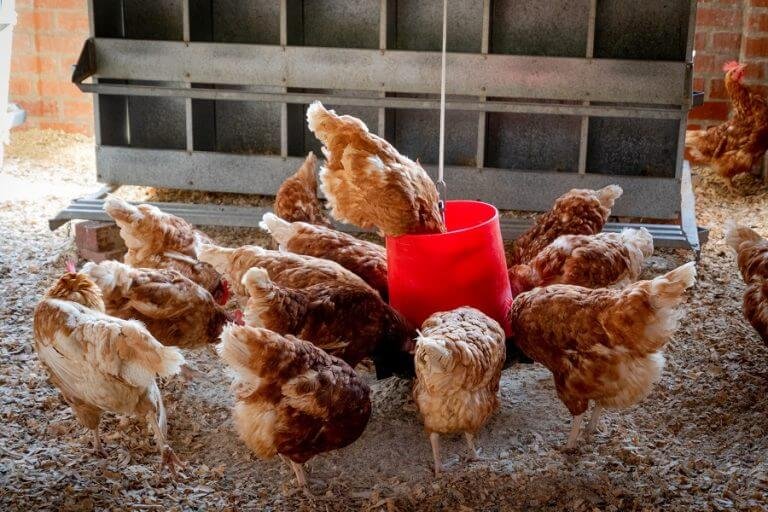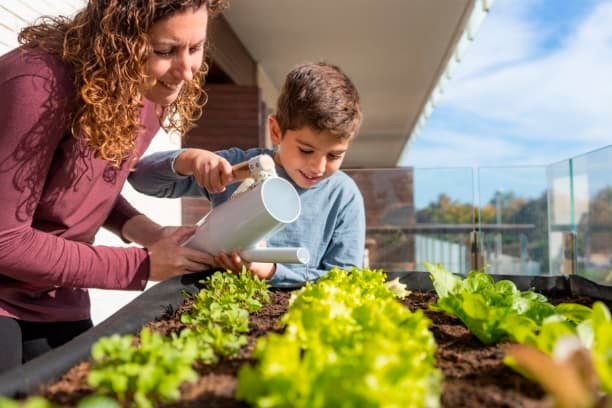How to Grow Pumpkin and Get Better Yields

Are you interested in learning about pumpkin and how to successfully grow them?
Then this is the article for you.
In this article, you will gain a lot of knowledge on how to grow pumpkins
You will learn how to plant, harvest, and store pumpkins.
Also, you will learn about the various diseases and how you can treat and even prevent them.
You will be informed about all the necessary things needed for growing pumpkins.
In addition, you will get to know how it benefits your body and so many other things.
Origin, Family, and Botanical Names of pumpkin
Pumpkins were first found in Mexico in Oaxaca Highlands though they are believed to have originated in Central America.
Pumpkin is the name given to a group of plant species in the Cucurbita
It includes Cucurbita moschata, Cucurbita maxima, Cucurbita pepo and Cucurbita mixta.
It belongs to the Cucurbitaceae and it is primarily grown as a vegetable or ornamental plant.
Pumpkins have different varieties and they vary in color.
The skin can either be orange, green, gray, yellow, or red in color.
Did you know that just like pumpkin, squash is also a cucurbit? To learn more about squash and how to grow them, read this article – How to Grow Squash Plant – The Complete Farming Guide
Uses of pumpkin
Pumpkins are popular for Halloween and Thanksgiving.
They are used for jack-o-lanterns during halloween and for pumpkin pie in thanksgiving meals.
They can be used in making various soups, brownies, butter, and pies.
When you remove all the guts and seeds from your pumpkin, the outer shell can be used to plant flowers.
Industrially, pumpkin powder is used to add flavors to bakery products and seasonings.
It can also be used for purees and jams.

Health benefits of pumpkin
- Rich in vitamins: Pumpkins are rich in vitamin A which is important for the immune system, reproduction, and normal vision.
- Nutrient filled: Pumpkins are highly nutritious and good for the body.
- Weight loss: Pumpkins may promote weight loss because they are low in calories.
- Immunity: Pumpkins may boost immunity because it is packed full of vitamins.
- Rich in fiber: Pumpkin seeds are rich in fiber and magnesium which may help to prevent breast cancers and several other diseases.
- Blood pressure: Pumpkins contain naturally low sodium which can help to support and promote healthy blood pressure.
- Cholesterol: Pumpkins are good for maintaining good heart health and low cholesterol levels.
- Skin Protection: Pumpkins help to improve and protect your skin and its health.
- Cancer: Pumpkins can help to prevent breast cancer.
Conditions necessary for growing pumpkin
Pumpkins are so amazing.
They can grow on almost any good soil where there is sunlight.
The most favorable soils for growing them are sandy soils that have an organic matter of about 10%.
This is because the soil will warm up fast and drain quickly.
If your soil is heavy clay, you can help your pumpkins grow by adding sand and organic matter to it.
Pumpkins flourish well in slightly acidic or nearly neutral soils with a pH level of 6.0 to 6.8.
They grow best in hot weather because they are sensitive to cold
The perfect temperature for growing them is between 65 and 95F.
Relative humidity of 60% (+/- 20%) is optimal.
Normally, seeds will germinate at 15°C (60°F), but they germinate best at 29-32°C (85°F-90°F).
If you love watermelons as we do, then you will love to grow your own organic watermelons and make money doing so. If you like that idea, then learn How to grow watermelons commercially.
When to plant the pumpkin
In regions with temperate climates like Australia, the best months to plant pumpkins are September, October, November, and December.
Because pumpkins have thinner skin, they are sensitive to cold.
You have to put in extra work to help them grow successfully.
If you are expecting frost, covering your pumpkin plants can help them to survive the cold.
You can cover them with old blankets, quilts, or sheets.
You can also plant them in newspaper pots.
This is to ensure that they grow strong enough to withstand the cold before they are planted outside.
Make sure to plant the seeds outdoors two weeks before your last frost.
Best pumpkin variety to grow
The best pumpkin variety to grow is the small ones.
They take about 100 to 105 days to fully mature.
Examples of the small ones are
- Baby bear- 105 days.
- Small sugar- 100 days.
- Baby pam- 100 days

How to grow pumpkin step by step
Step 1: Soil preparation
Growing your pumpkins starts with selecting good soil and preparing it for planting.
To prepare a soil bed for your pumpkins, select the size of the area you want to prepare.
Bear in mind that pumpkin plants need a lot of space.
Vines can run 25 ft and they can dig down deep 2-3 ft.
Make sure that you avoid areas where vine crops have grown before.
Enrich your patch and the areas around it where your pumpkin vines will grow.
Do a soil test to know the pH of your soil.
Soils with pH 6.00 and 6.5 are very good for planting pumpkins.
Step 2: Plant Spacing
Generally plant your pumpkin seeds about 2 inches deep holes and around 2-3 ft apart.
Step 3: Growing
At the early stage of growth, water your pumpkin patches in the early evening so they can dry before nightfall.
You can add a liquid fertilizer or high nitrogen to start if your soil needs it.
Around 8 to 10 weeks after planting, your pumpkin plants should start to flower.
The male flowers usually appear first.
You can identify the female flowers by the fruit at the base.
If you have no bees in your garden, you can pollinate by hand.
Find a fresh male flower, peel back the petals and rub the male flower on to the female flower.
As the fruits grow, arrange them so they sit as squarely on the ground as possible to preserve their shape.
How to harvest pumpkin
Pumpkins are harvested by hand when the fruit is fully mature.
When you notice the uniform color changes and hardness of the rind, it means the fruit is ripe.
You should harvest your pumpkins by cutting the stem with a sharp knife.
It is better to harvest the fruit with a portion of the stem.
This is to help to keep the fruit fresh for a longer period of time.
You can leave the fruits to cure in the sun for about 10 days or more.
How to store pumpkin
Store your pumpkins in a single layer in a cool dry and dark spot.
Let the temperature range be between 50°F and 60°F and humidity between 50 and 60%.
In colder regions, you can store them in a cool basement area, an unheated attic or bedroom.
Ensure that wherever pumpkins are stored, it is frost-free and well ventilated.
Types of diseases that affect pumpkin and prevention techniques
Diseases that affect pumpkins can be split into two.
It is either foliar in nature or a disease of the fruit.
The foliar disease often opens the plant up to other infectious diseases as well as sunscald.
It affects only the crops.
- Powdery mildew
- Downy mildew
- Anthracnose
- White speck
- Gummy stem blight
Powdery mildew
Powdery mildew is a white ‘powdery’ covering of spores on the leaf.
It moves from the lower leaf surface to the upper until it completely defoliates the plant.
Apply fungicide at first sight.
Downy mildew
Downy mildew can be seen as lesions appearing on the upper surface of the plant.
At first, the lesions are yellow spots or water-soaked areas.
The lesions become necrotic as the disease progresses.
Apply broad-spectrum fungicide at the first sign.
To reduce the chances of downy mildew, you can plant early season varieties.
Anthracnose
Anthracnose begins as small light brown spots outlined with a darker margin that expands as it progresses.
Eventually, the leaves develop small holes and fruit may show lesions as well.
Apply fungicide at the first sign.
White speck
White speck is also known as Plectosporium.
It appears as spindle-shaped lesions on the leaf surfaces.
If it affects the fruit, it will show tiny white spots that are circular in shape.
Gummy stem blight
Gummy stem blight affects most cucurbits.
It is most common in the southern United States.
Apply fungicide to reduce and combat this disease.
How to care for pumpkin plants
Tread carefully on the soil when pruning or use boards to avoid compacting the soil and inhibiting the root system.
Prune the secondary vines and the side shoots.
Wait until your pumpkins are grapefruit size before pruning.
This is to allow the vine to grow as long as it can.
General tips for growing pumpkin
- Do not soak your seedlings or young plants with water.
- Weed your pumpkin patch once a week to ensure your pumpkins get all the nutrients.
- Choose your planting seeds carefully.
FAQs
Q1: Can I over water my plants?
Yes, you can.
Pumpkins are very thirsty plants and they need water especially the bigger ones.
To avoid overwatering, water an inch every day.
Q2: Can I plant pumpkins in Nigeria?
Yes, you can.
Nigeria has fertile soil.
Just do the soil testing first.
Q3: How else can I treat powdery mildew?
You can treat it by rotating cucurbits with non-cucurbits.
For example, if you plant cucurbits that year, next year you can plant non-cucurbits.
Conclusion
I hope you can now successfully grow your own pumpkins.
Now you know that pumpkin farming is easy as far as you know all you need to do.
You can start a business selling pumpkins or making
If you have any questions from the FAQs, send them and they will all be answered.
Check out our other interesting content below.
Reference





